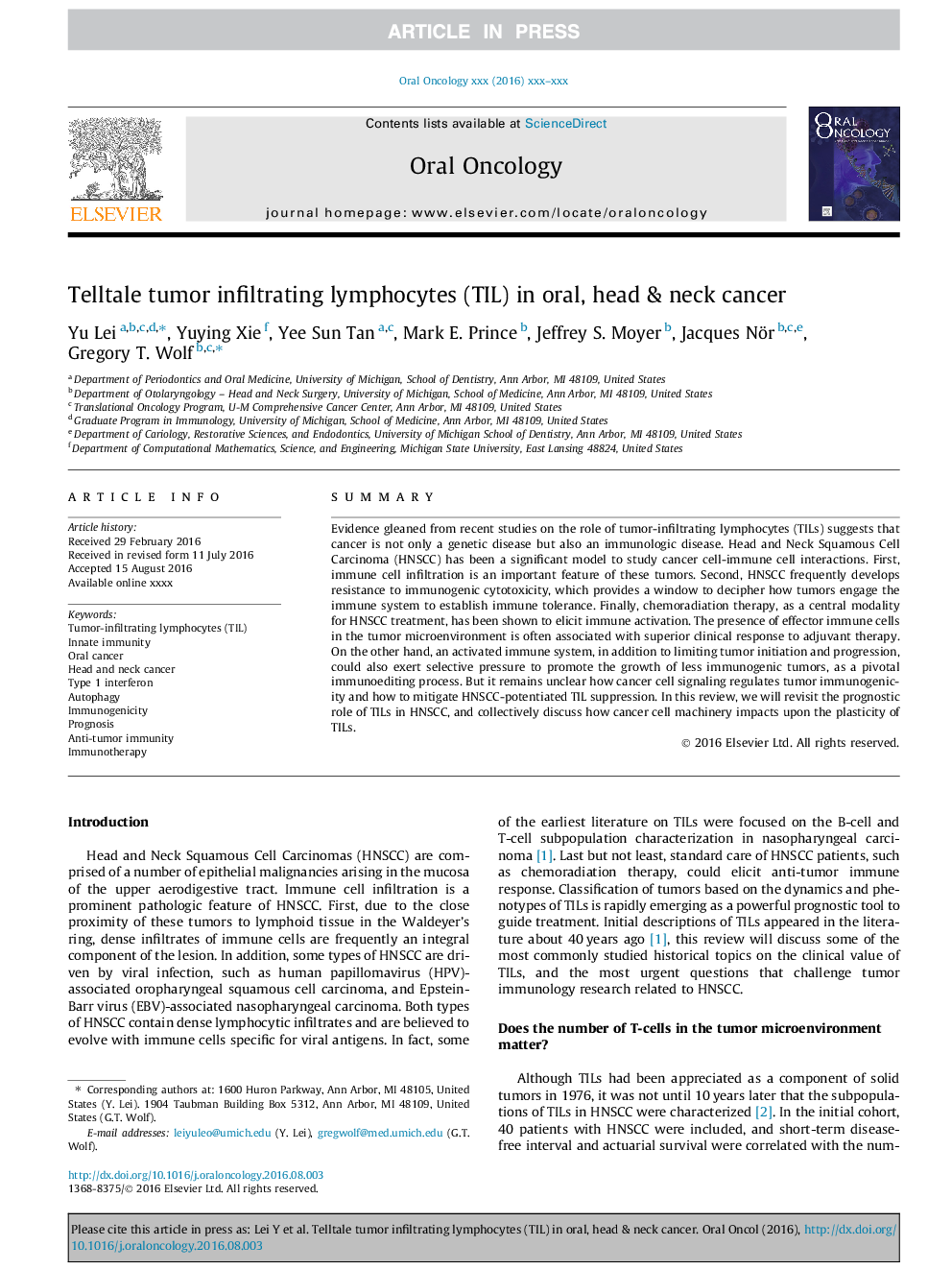| Article ID | Journal | Published Year | Pages | File Type |
|---|---|---|---|---|
| 8707544 | Oral Oncology | 2016 | 7 Pages |
Abstract
Evidence gleaned from recent studies on the role of tumor-infiltrating lymphocytes (TILs) suggests that cancer is not only a genetic disease but also an immunologic disease. Head and Neck Squamous Cell Carcinoma (HNSCC) has been a significant model to study cancer cell-immune cell interactions. First, immune cell infiltration is an important feature of these tumors. Second, HNSCC frequently develops resistance to immunogenic cytotoxicity, which provides a window to decipher how tumors engage the immune system to establish immune tolerance. Finally, chemoradiation therapy, as a central modality for HNSCC treatment, has been shown to elicit immune activation. The presence of effector immune cells in the tumor microenvironment is often associated with superior clinical response to adjuvant therapy. On the other hand, an activated immune system, in addition to limiting tumor initiation and progression, could also exert selective pressure to promote the growth of less immunogenic tumors, as a pivotal immunoediting process. But it remains unclear how cancer cell signaling regulates tumor immunogenicity and how to mitigate HNSCC-potentiated TIL suppression. In this review, we will revisit the prognostic role of TILs in HNSCC, and collectively discuss how cancer cell machinery impacts upon the plasticity of TILs.
Keywords
Related Topics
Health Sciences
Medicine and Dentistry
Dentistry, Oral Surgery and Medicine
Authors
Yu Lei, Yuying Xie, Yee Sun Tan, Mark E. Prince, Jeffrey S. Moyer, Jacques Nör, Gregory T. Wolf,
